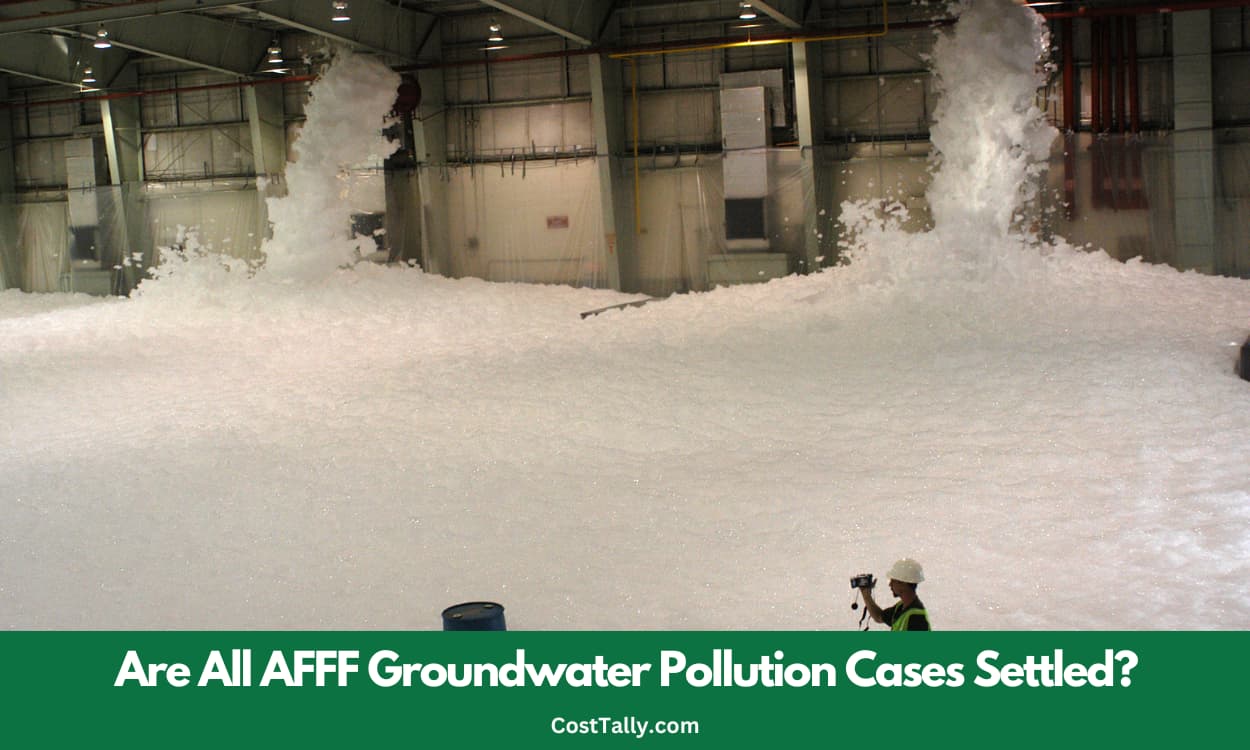With the increasing use of Aqueous Film-Forming Foam (AFFF) in the industry, its cancer-inducing abilities have now come to light. AFFF, a substance frequently used in military training exercises and firefighting operations, has per-and poly-fluoroalkyl substances (PFAS).
These substances are well-known for both their possible health hazards and their tenacity in the environment.
The issue of municipal water pollution nearly came to a close last year. Municipalities sued AFFF manufacturers like 3M and DuPont for water contamination from firefighting foam, leading to numerous lawsuits.
Are All AFFF Groundwater Pollution Cases Settled?

Most of these cases culminated in a notable $10.3 billion settlement in 2023, aimed at addressing the widespread contamination. However, not all parties agreed to this resolution, highlighting that the battle over AFFF contamination is far from over.
Where Does the Fight Against AFFF Stand Now?
With municipal cases settled, the focus shifts to individual lawsuits from firefighters and military personnel.
Recent studies reveal firefighters have three times the blood levels of PFAS compared to the general population, sparking fresh controversy.
As of April 2024, the AFFF litigation continues to evolve. There were an astounding 323 new claims filed, increasing the number of lawsuits to more than 8,000.
This surge in litigation also reflects the growing awareness and concern over PFAS contamination and its impacts, reports TruLaw.
A recent study has also linked PFOS—a type of PFAS chemical found in firefighting foam—to an increased likelihood of thyroid cancer.
The Impact of AFFF Water Pollution Cases on Regulatory Frameworks Across the Globe

The regulatory framework for PFAS is intricate and still continually evolving, often in response to the AFFF lawsuits. This is due to global agencies implementing policies to mitigate PFAS pollution’s effects on the environment and public health.
The ECHA and International Regulations
In Europe, the European Chemicals Agency is evaluating a comprehensive proposal to restrict over 10,000 PFAS across all sectors. This reflects a stringent approach to managing these substances.
Global regulatory agencies, including those under the EU’s Drinking Water Directive, are enacting measures to address PFAS contamination.
Environmental Protection Agency (EPA) in the US
In the U.S., the EPA sets maximum contaminant levels for PFAS in public water, including PFOA and PFOS. These regulations also cover PFNA, PFHxS, and HFPO-DA.
By the next three years, public water systems must adhere to regulations about public awareness and monitoring. The EPA has also banned AFFF in firefighting due to its significant contribution to PFAS contamination in drinking water.
Under the Comprehensive Environmental Response, Compensation, and Liability Act (CERCLA), government agencies can hold parties accountable for site cleanups. Consequently, the EPA now classifies PFOA and PFOS as hazardous substances.
At the state and local levels, many U.S. states have implemented their own PFAS regulations and guidelines. This includes reporting requirements, monitoring, and remediation standards. States and territories can find information on PFAS regulations from the Association of State and Territorial Solid Waste Management Officials.
Compliance Obligations
If the above regulations are not followed, substantial financial penalties, legal actions, and reputational damage can be incurred. The key compliance obligations are:
- Regular monitoring: Tracking PFAS concentrations in affected areas is vital to ensure regulation compliance and prompt actions if needed.
- Remedial actions: Responsible parties must implement remedial strategies to address PFAS contamination and mitigate environmental and health impacts.
- Supply chain transparency: Companies must ensure transparency in their supply chains by disclosing PFAS usage and concentrations. They should provide such information to regulatory authorities, customers, and stakeholders.
Frequently Asked Questions
- How do PFAS compounds enter drinking water supplies?
PFAS compounds often enter drinking water supplies through industrial discharges, landfill leachates, and the use of firefighting foams. Contaminated soil and groundwater can also spread PFAS to water sources.
- What steps can individuals take to reduce PFAS exposure at home?
Individuals can reduce PFAS exposure by using water filters certified to remove PFAS. Avoid products containing PFAS, like certain non-stick cookware and stain-resistant fabrics. Regularly checking local water quality reports can also help.
- Can PFAS be completely removed from contaminated sites?
PFAS removal is challenging due to its persistent nature. However, technologies such as activated carbon filtration, ion exchange, and advanced oxidation processes can significantly reduce PFAS levels. Complete removal often requires long-term management and monitoring.
- Are there alternatives to AFFF that do not contain PFAS?
Indeed, firefighting foams free of PFAS are made to put out fires efficiently without endangering human health or the environment. Fire departments and industrial users are adopting these alternatives at an increasing rate.
Also Check:
Conclusion:
In conclusion, precedent-setting cases and ongoing regulatory developments in the AFFF battle are still shaping liability standards and remediation requirements.
As a result of recent settlements, businesses have put in place efficient compliance plans to ensure profitability and reduce risks.



